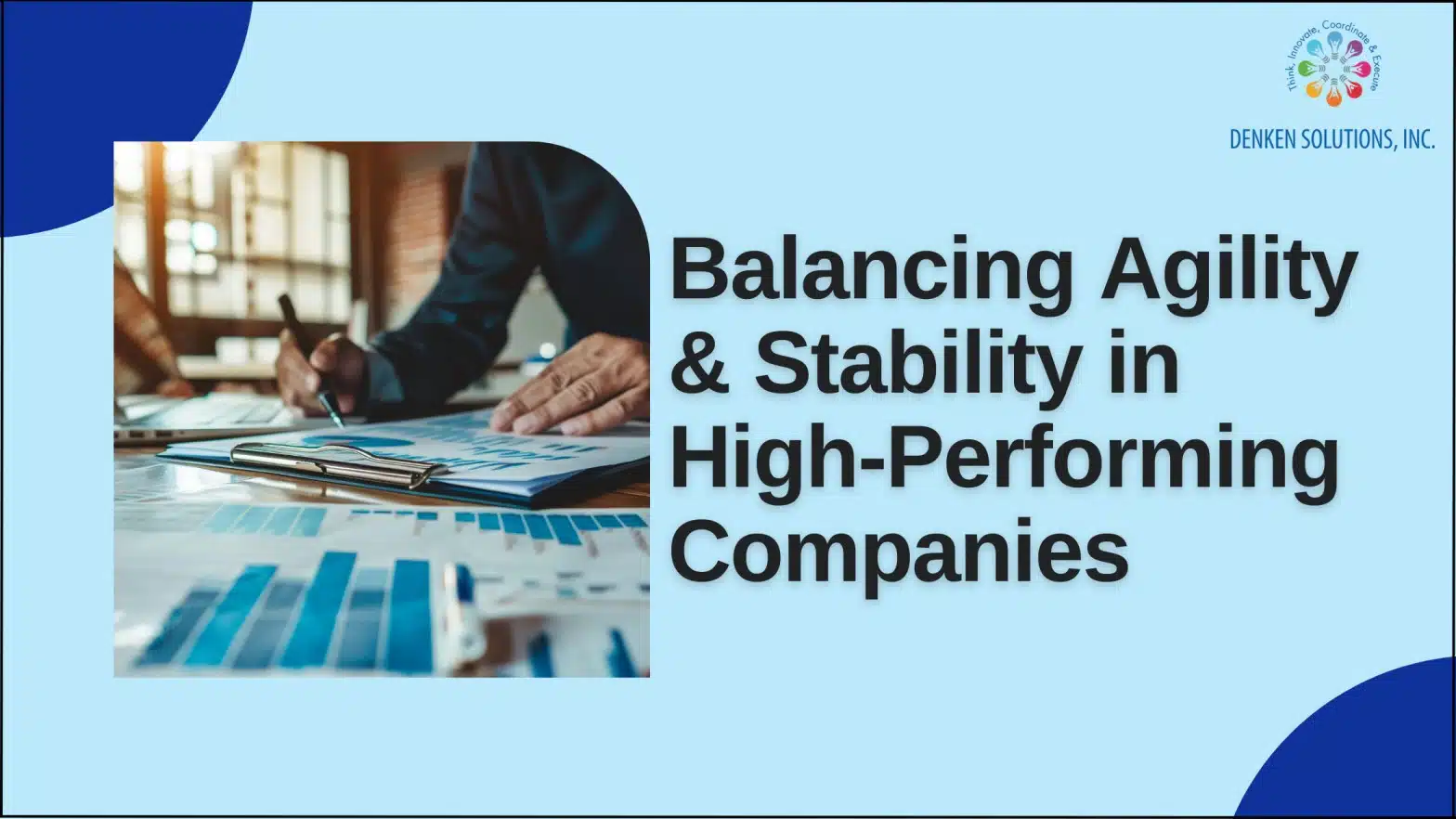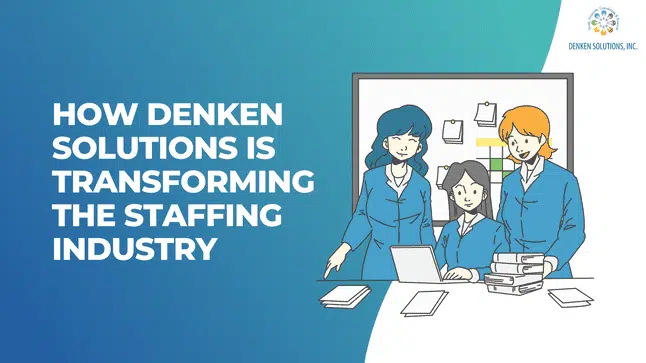The critical blend powering high-performing companies
While agility is necessary to adjust to the market’s quick changes and uncertainties, stability is necessary to ensure a strong foundation. According to workforce agility strategies, for long-term success, finding the ideal balance between these two seemingly incompatible factors is essential. As per a Boston Consulting Group report, 94% of executives think that organizational agility is essential for company success. However, according to a McKinsey study, businesses with robust leadership development initiatives had a 1.8-fold higher chance of ranking among the highest-performing firms in terms of sales and profitability.
Insights on workforce agility and stability:
According to the 2025 Global Human Capital Trends study, 75% of employees hoped for more job security in the future. On the other hand, company executives are under pressure to change and adapt. Only 19% of company executives think traditional work arrangements are the most effective way to add value for the company and its employees. Additionally, according to 85% of respondents, companies must develop more flexible work arrangements to quickly adjust to changes in the market.
There is a growing gap between executives and employees, with workers preferring stability and leaders getting ready for more flexible working methods. The difficulty is that the workforce’s capacity to adapt to new work models of flexible staffing solutions is a major determinant of an organization’s capacity to do so.
There is a disconnect between information and action for a lot of organizations. Though few are taking effective action, the vast majority of firms understand how important it is to strike a balance between agility and stability. The ability of organizations to discover ways to anchor the work, the organization, and the person will probably determine whether they can achieve this equilibrium.
These new anchors ought to offer a feeling of self, a well-defined course of action, and a conceptual framework for how work is done. They should also provide employees a feeling of direction and stability, tying them to the company in a mutually beneficial vision.
Static job descriptions, linear, internal career pathways, and employment models are examples of traditional anchors that have long provided stability for both organizations and workers. As these anchors are upended, workers may find it difficult to find the grounding they need to act with confidence and creativity and to have the dynamic capability to respond and evolve. In order to strengthen the bond between workers and organizations and put both in a position to adapt and thrive, organizations and workers must find new sources of stability via staffing trends.
These new anchors will take the form of reimagined organization structures, increased intentionality in the design and resourcing of work, a better understanding of workers as individuals, and stronger networks both inside and outside the office.
Recognizing stability and adaptability as essential components of success
Being flexible enables a company to respond swiftly to shifts in the market, especially with the increasing trend of peak season contingent staffing, variations in the workforce, and unforeseen difficulties such as those encountered during the pandemic a few years ago. Enhancing work-life balance and employee well-being is another benefit of promoting workforce agility through work arrangements like remote work and flexible scheduling.
Stability gives workers a sense of security and guarantees that they feel appreciated and included in the company’s long-term goals. Moreover, establishing a stable environment includes clear communication of business goals, predictable work arrangements, standardized processes, and consistent support for employee development.
How can businesses strike a balance between stability and agility?
Balancing stability and agility is key to thriving in a fast-changing world. Too much of one can lead to chaos or stagnation. Some ways to effectively balance both are:
- Adopt workforce planning and strategic forecasting:
As part of your contingent workforce management strategy, include strategic forecasting. This entails assessing your present personnel, predicting future requirements based on business strategy, and spotting possible talent pool shortages or surpluses.
You may anticipate changes and get ready for future workforce needs by coordinating workforce planning with strategic goals. This will help you balance the distribution of human resources and ease the transitional periods in your company.
- Put talent recruiting and retention strategies into action:
Accessing top talent in international markets requires a strong talent acquisition strategy. This entails determining the competencies and skill gaps required for future success as well as broadening talent pools through varied hiring procedures.
Retention, which guarantees the stability of your present personnel, is equally crucial. To maintain your employees’ commitment and engagement, implement programs that emphasize career growth, mentoring, upskilling, and a positive work environment.
- Implement flexible workforce management:
Offer a variety of work schedules, including part-time, full-time, remote, hybrid, and outsourcing possibilities, to embrace the idea of a flexible workforce. This flexibility enables your organization to meet business demands quickly while promoting the health and work-life balance of your staff.
Since there are technologies to make managing this diversity of possibilities simple, embrace it as an opportunity rather than an additional layer of complexity. Make sure the appropriate tools support your flexible or remote work rules because automation and technology play a critical role in enabling remote work and guaranteeing continuity of operations, regardless of physical location.
- Invest in the development of human capital:
Maintaining a steady and competent workforce requires investing in your employees’ professional growth. This involves giving people the chance to learn new skills through upskilling and training initiatives.
You can reduce the amount of work required for your human capital management operations and minimize the risk of your organization being vulnerable to unforeseen skill gaps affecting your work by cultivating a culture of learning and growth. This will also ensure that your workforce has the necessary skills to meet the demands of a dynamic business environment.
- Establish a culture of support throughout the organization:
The foundation of stability and adaptability is the company culture. Create a culture that prioritizes openness, flexibility, and worker welfare. Initiatives that support inclusivity, diversity, mobility, and a good work-life balance facilitate attracting and keeping top talent. This culture is further strengthened by mentoring initiatives and open lines of communication between management and staff, which guarantee that everyone is on board with the company’s strategy and feels encouraged in their positions.
Make sure that the policies and procedures are correctly executed and promoted, including the principles of flexibility and stability, which should be ingrained in your cultural messages from the time of onboarding.
- Adapt resource allocation to business requirements:
Evaluate human resource allocation regularly in light of evolving business objectives and needs. To more effectively reallocate resources, this may entail reorganizing teams, assigning new tasks, or even cutting back on some areas.
Proactively making these changes guarantees that your business maintains its flexibility while offering job security to your staff via open communication and carefully thought-out redeployment plans.
- Make decisions based on data and metrics:
Make use of data analytics and metrics to track how well your workforce management tactics are working. Important insights into areas for success and improvement can be gained from key performance metrics about staffing, retention rates, employee happiness, and productivity. You may improve your strategies for striking a balance between stability and flexibility by using data-driven decision-making to make sure they meet the needs of both your company and your employees.
Denken Solutions: A Real-World Example of Workforce Balance in Action
One of the top contingent staffing firms in the USA, Denken Solutions, is a prime example of how companies may effectively strike a balance between workforce mobility and stability. Denken gives businesses the ability to swiftly adjust to changing demands by offering scalable workforce solutions, guaranteeing agility without compromising business continuity. Their strategy blends a strong emphasis on matching skill sets to long-term corporate objectives with the flexibility of contingent talent.
Denken Solutions assists businesses in creating teams that are dependable and flexible through solid collaborations, comprehensive workforce planning, and a dedication to high-quality hiring. In addition to increasing productivity, this combination of responsiveness and consistency strengthens resistance to change.
Finally, stability and worker agility are now complementary pillars of long-term success in today’s changing business environment. Successful businesses have demonstrated that quick innovation is feasible without sacrificing a solid organizational base. Organizations may adjust to change without sacrificing performance or consistency by embracing flexibility, making investments in leadership development, and cultivating a culture of ongoing learning. Finding this balance is essential for long-term influence, growth, and resilience, not only for strategic advantage. Organizations should reconsider their labor plans now to create a future that is both flexible and stable.



